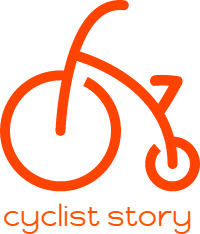Saya ingat, awal mulai rutin latihan lari itu pada bulan puasa 2 tahun yang lalu. Bulan ini puasa dimulai, jadi kurang lebih sudah 2 tahun saya menekuni olahraga lari. Saya mulai lari dengan jarak hanya 1km, dengan hasil otot betis kram, nyeri di kaki dan pinggang. Nafas dan jantung tidak ada masalah karena saya sudah terbiasa bersepeda sebelum mulai menekuni olahraga lari.
Tidak terasa sudah 2 tahun
berlalu, jarak tempuh lari 1km sekarang sudah berganti menjadi 10km. Cukup lama
waktu yang diperlukan sampai saya sanggup lari dengan jarak 10km. Hal tersebut
karena saya tidak peduli dengan pace dan berusaha sebisa mungkin menghindari
cedera akibat berlari. Saya lari mau mencari sehat dan bersenang-senang, bukan
prestasi dan gengsi yang saya kejar.
Alhamdulillah, selama 2 tahun ini
tidak ada cedera yang signifikan. Semakin lama saya semakin tahu batas-batas
tubuh saya dan mulai bisa meningkatkan pain threshold saya sedikit demi
sedikit. Teknik-teknik dalam berlari juga semakin banyak saya dapatkan dan praktekkan.
Semakin lama, sesi lari yang awalnya terasa penuh siksaan menjadi terasa
menyegarkan dan memuaskan.
Saya meningkatkan jarak secara
gradual tergantung kondisi fisik. Pada tahun pertama, saya menetapkan jarak
tempuh maksimal 5km. Pada tahun kedua, target saya 10km dan sudah tercapai pada
bulan April. Target berikutnya adalah half marathon (21,10km). Saya tidak yakin
bisa mencapainya pada tahun ini, tapi mungkin baru akan tercapai pada tahun
depan (2019).
1 hal yang memacu saya untuk
terus menambah jarak berlari adalah video race footage dari UTMT (Ultra
Trail World Tour) di Youtube. Pemandangan yang indah ditambah dengan
fakta-fakta baru dan aneh bagi saya (seperti mulai start pada tengah malam,
rute lomba melintasi padang pasir dll) membuat saya terpukau dan berharap suatu
saat saya juga bisa berlari seperti mereka.
Secara sederhana, ini log saya
dari tahun pertama berlari sampai dengan tahun kedua:
Tahun
pertama:
Jarak tempuh
maksimal: 5km
Penambahan rute:
100-500m per bulan
Peralatan lari
yang digunakan: spibelt, water belt, calf compression sleeve, headband dan kacamata
Sepatu: New Balance
580v2 dan New Balance 880v5
Tahun
kedua:
Jarak tempuh
maksimal: 10km
Penambahan rute:
1km per bulan
Peralatan lari
yang digunakan: hydration running vest, topi dan kacamata
Sepatu: New
Balance 880v5 dan Puma Descendant v2
Sepatu New Balance 580v2 sudah pensiun
karena rusak, sedangkan New Balance 880v5 sampai saat ini sudah memiliki jarak
tempuh sekitar 500km dan Puma Descendant v2 sampai saat ini sudah memiliki
jarak tempuh sekitar 200km.
Calf compression sleeve awalnya menjadi peralatan wajib saat berlari, namun saat ini betis saya sudah tidak terasa sakit untuk digunakan berlari 10km tanpa Calf compression sleeve. Namun, kadang masih saya gunakan pada sesi awal menambah jarak tempuh berlari.
Dengan jarak tempuh lari 10km, water belt 3 botol kecil tidak mampu membawa air dengan jumlah yang saya butuhkan. Water belt ini pensiun dan digantikan dengan hydration vest, lebih mampu membawa air dengan jumlah banyak dan juga bisa mendistribusi beban lebih merata di badan.
Run On!

































